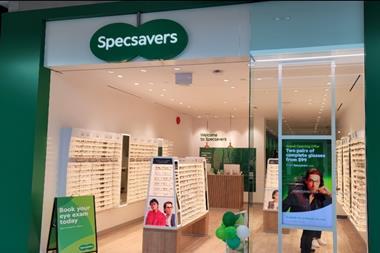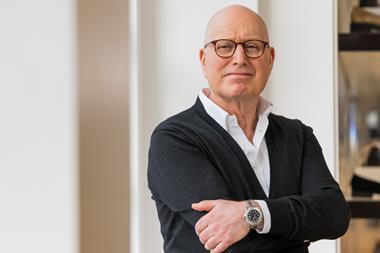Kingfisher’s French arm has been an unsung hero for the DIY giant, achieving strong results in a tough market. Nicola Harrison reports from Lyon
Images of orange-aproned B&Q staff spring to most people’s minds when they think of DIY giant Kingfisher.
And while some might be familiar with its overseas operations, probably few of those outside the home enhancement sector realise the contribution its foreign stores make to the business, particularly Kingfisher France.
Its stores - under the Castorama and Brico Dépôt fascias - accounted for 40% of group turnover last year and 48% of profits, compared with Kingfisher UK’s 33% profit contribution.
In the first quarter, the French arm was Kingfisher’s dynamo and clocked up a better than expected result.
United thinking
So any insight into the business that sits 21 miles across the English Channel gives an insight into the Kingfisher group. Last week’s analysts’ trip to Lyon was designed to do just that.
Kingfisher France chief executive Philippe Tible describes - in his improving English - the differences between the UK arm and its French counterpart. “Process, organisationand management are B&Q things, like the left side of the brain,” he says. “The right side of the brain is us, with more creativity in product. We dare more than B&Q do. But when you combine both it’s fantastic.”
The French business does seem to have an eye for innovation (see Castorama box). “The reason for being is the product,” explains Tible, on the way to the Castorama store in Dardilly. “We need to focus all the business on availability, quality and price.”
Such focus seems to be winning over the French public. With a combined market share of about 25%, Kingfisher France is number one in a competitive sector. “In France there is lots of strong competition,” says Tible. “But we can create a gap with these competitors.”
Kingfisher group chief executive Ian Cheshire says: “Overall the French market has always been a bit more stable than the UK, although last year the market went down for the first time in 15 years. But the trend towards home ownership has continued. It’s a great home improvement market.”
To capitalise on this market, the French business is embarking on a period of great change (see boxes). “We need to reinvent. People think an accelerator [to growth] is lower price, lower price, lower price. No way. We want to be easier for the customer, be more trendy, with a high level of quality.”
Tible puts great emphasis on the management of both businesses, referring to the “passion the teams have and the experience”.
Castorama France chief executive Guy Colleau says: “I have a very close team. It is a young team - 40 to 45 years old - and we are co-ordinated to grow market share.” He adds that 90% of store managers are promoted from within.
At Brico Dépôt, chief executive Alain Souillard says the chain has a “young team with various experiences” that will “definitely ensure the renewal of Brico Dépôt”.
Since Cheshire was appointed Kingfisher group chief executive in 2008, the two businesses have turned from rivals into amicable compatriots. Whereas once they were run separately, they are now run as one business, offering opportunities to save money through common sourcing, share best practice and leverage own-brands.
Arden Partners analyst Nick Bubb, who was on the trip, says: “In the past the French business failed to exploit the synergies and it was rather dysfunctional, with the two chains competing. Now it is run as one business with a unified management team and it is performing well in a tough market.”
Tible says: “We need this competition, these two brands. The partnership will allow us to move forward with the two store formats and business models.”
Cheshire highlights the major contribution the French arm makes to the group: “It’s our biggest single profit earner so it is absolutely critical. But it is not just the cash, it is retail flair and innovation. There is so much we’ve borrowed in terms of products.”
The UK and the French divisions are working more closely together than ever, and group sourcing is one example. This year the two worked on garden furniture together, and 60% of Castorama’s lines in the category also feature in B&Q stores here in the UK. “It makes a difference,” says Tible. “We’ll do more in lighting, barbecues and bathroom.”
Road to innovation
Earlier this month the B&Q management team, including boss Euan Sutherland, visited Castorama stores to discover more about its innovation strategy. Castorama executives had previously visited B&Q stores to learn more about its reserve-and-collect service - something that the French retailer will introduce next year.
But it is not just in the realm of product and service that two businesses have rubbed off on each other. Tible says his French way of “discussing everything” is now starting to impress on the Kingfisher retail board, on which he sits. “In Kingfisher they aren’t used to that, but they’re getting more like that,” he says.
Another analyst on the trip was Shore Capital’s Kate Calvert. She says Kingfisher France will benefit from the “property market appearing to have stabilised” as well as increasing demand and buying benefits from joint sourcing initiatives.
And Bernstein analyst Luca Solca, also on the trip, says the French business is “value enhancing for Kingfisher”.
The contribution France is making to the group shows, with the yet-to-be realised advantages from its international businesses joining forces, the strength Kingfisher derives from its international base.
Castorama: Innovative product
Castorama - number two in the French market with more than 13% and behind Leroy Merlin - prides itself on being a leader in innovation.
Like Brico Dépôt, it is going through a period of change. Castorama France chief executive Guy Colleau (pictured) says: “DIY has not evolved much since the 1970s. The complexity of products makes it inaccessible. We want to shift away from the difficult, heavy 1970s to more simple and intuitive DIY I can do myself.”
Product innovation is a key plank in the 101-store retailer’s future and it has taken on the task with gusto. Its Do it Smart range focuses on clever innovations designed to make DIY easier for the customer, such as a ready-to-install tile without the need for glue. This was designed exclusively for Castorama and has “revolutionised the market” says Colleau. Castorama has also exclusively designed a tile that can be glued to another without the need for the time-consuming removal of existing tiles.
Other products include a shower that can be installed in two hours, folding plaster board to help customers get it home and an exclusive toilet with a sink in the top of it that re-uses the water used to wash hands to flush the toilet.
Colleau says the product is already proving a hit and in the Dardilly store it had sold out completely, selling four times the number expected. “We are going to become product designers around innovation,” says Colleau.
Such innovations not only save time for the consumer, but also space. “In the future we’ll need to offer solutions on how to live in smaller areas,” says Colleau.
Between 25% and 30% of Castorama’s product is own-label and Castorama France commercial director Christophe Mistou has “ambitious” plans to grow that.
As well as new products, Castorama is conducting a “complete revolution” of its merchandising. Two thirds of the portfolio will have been revamped by 2010. Digital price signage features throughout the store, while ‘how to’ boards can be found next to products to “encourage self help as much as possible”, according to Mistou.
“We want to develop customer autonomy within the stores.” This is a key target for Castorama.
An iPhone app, for example, allows customers to scan a product’s barcode to obtain all the information about that product. New software in stores helps customers choose their kitchen based on colour scheme and style, even taking into account their lifestyle. Its multichannel offer, through stores and website, is growing.
Colleau says Castorama’s growth is “very positive” compared with the market and the retailer is planning two to three openings a year. Like-for-likes at Castorama in its first quarter rose 2% this year.
Bernstein analyst Luca Solca said Castorama’s strategy is “really very impressive” because it is “really taking a leadership role on the product and puts customers at the centre”.
Brico Dépôt: Getting into shape
Brico Dépôt, the no frills sister chain of Castorama, has a tougher task to get itself into shape. The 100-store chain was hit harder than Castorama in the recession due to its reliance on trade customers, who account for 41% of its shopper base.
Brico Dépôt, third in the French market with 11% share, delivered flat total sales of £480m, with like-for-likes down 1.9% in the first quarter. While Kingfisher France finance director Marc Ténart admits the French building market is “very difficult”, he says the business is outperforming the market. It sees room for 30 to 50 new stores.
Brico Dépôt chief executive Alain Souillard (pictured), who joined in January and has 34 years under his belt at retail giant Carrefour, says the chain “must reinvent” its business model, while staying true to its fundamentals - price and simplicity.
Brico Dépôt has an Everyday Low Price architecture and boasts “very high sales per SKU”, but Souillard points out that 80% of product ranges have remained untouched for four years. “This will be reviewed,” he says. “We want to give freshness and modernity to the ranges.”
Value is key for Brico Dépôt. Commercial director John Declerck points out the number of white vans and “downmarket” vehicles in the car park of the St. Priest store. “We invest heavily in pricing but are not lowering prices for the sake of lowering prices,” he said. It is also working on emphasising its value credentials through new and more frequent product catalogues. Historically the chain had a “lot of SKUs in low volume, which frustrates customers - when it’s gone it’s gone”, says Declerck. “But now our fewer SKUs are working better.”
Declerck worked for Brico Dépôt previously and, when returning to the business some years later, found stores in the same tired state. So the retailer set about “improving the basics”. It formed a new merchandising team, where before it just had a team that “put product into boxes”, according to Declerck. Brico Dépôt is now developing packaging with suppliers and is working on “modernising” display ranges.
It has also launched Project Romeo - a trial of new low-cost store conversions. A “much bolder” fascia is being tested in six locations. “Our stores were very silent,” says Declerck. “We’re now using the space to explain the product offer and be more in your face than in the past.”
The ‘pile it high sell it cheap’ ethos of Brico Dépôt ensures that it is a “very different animal” to Castorama, according to Declerck. Some of the challenges are evident in the Brico Dépôt store in St. Priest visited on the trip. It seems a little tired and a bit dark. There are no room-sets to display the product - everything is very functional. Even so, its appeal is evident too. Trade customers know what they want and do not need to hang about browsing the 10,000 SKUs, stacked in a way that resembles an Aladdin’s Cave for builders.


























No comments yet